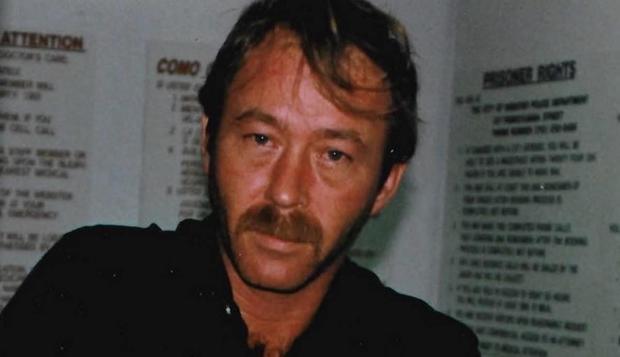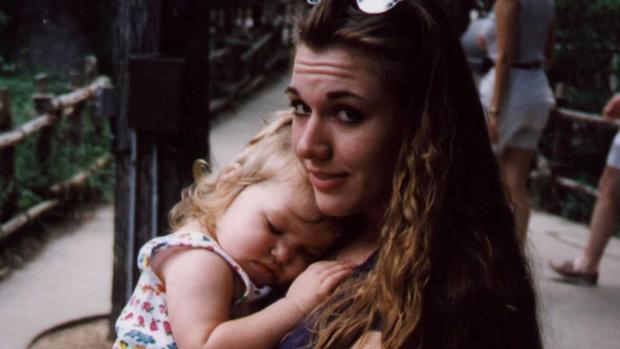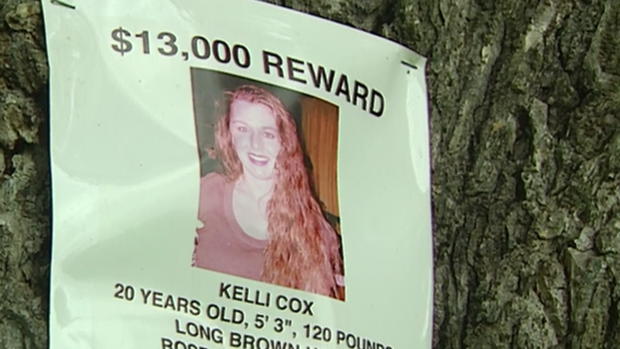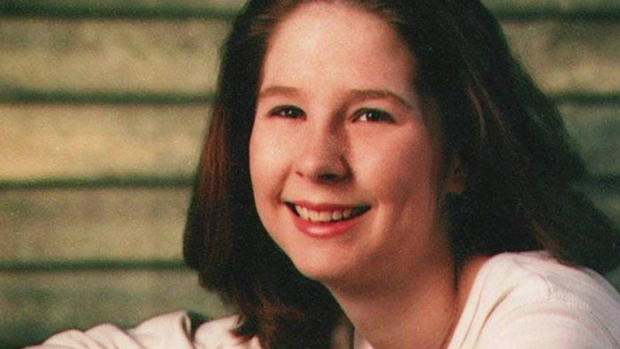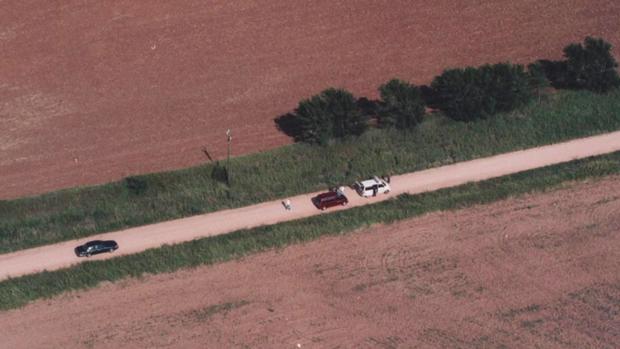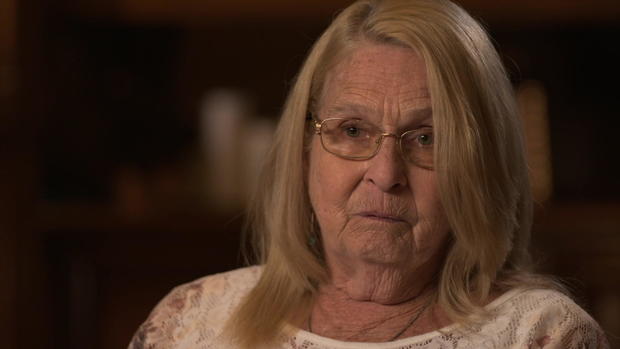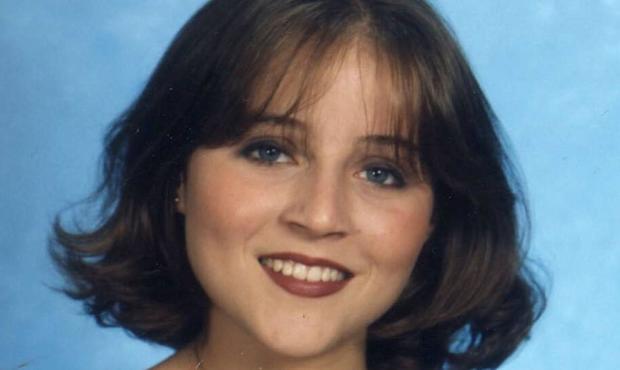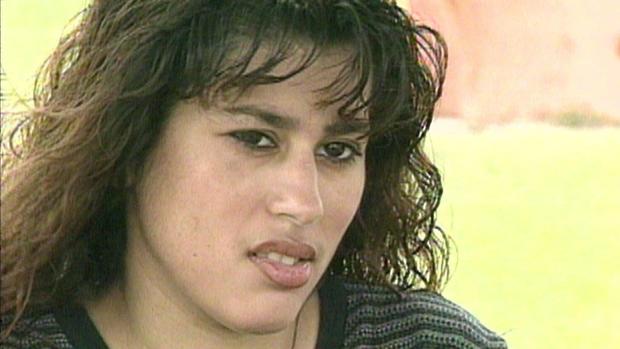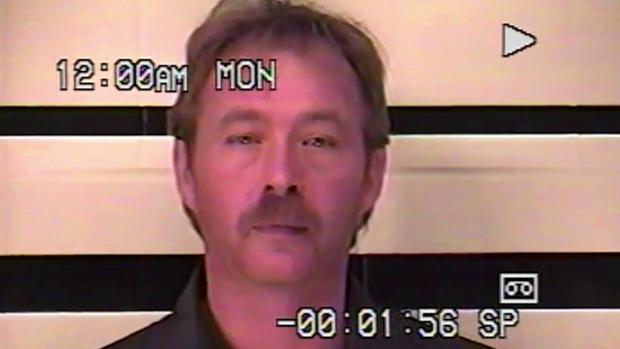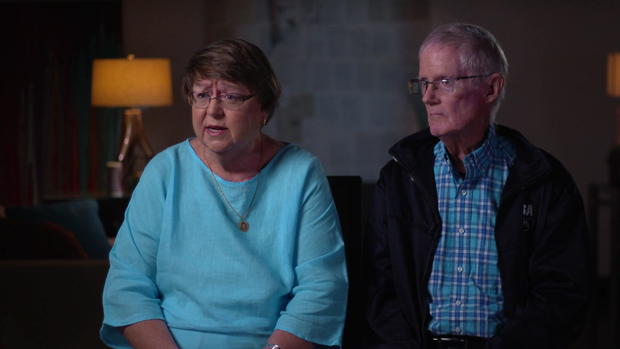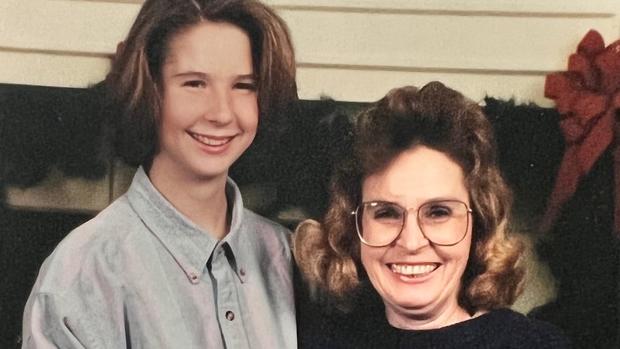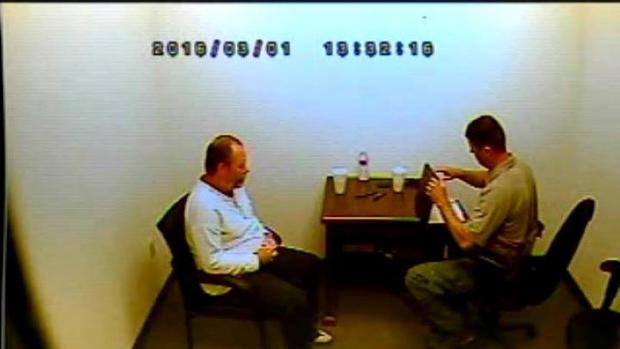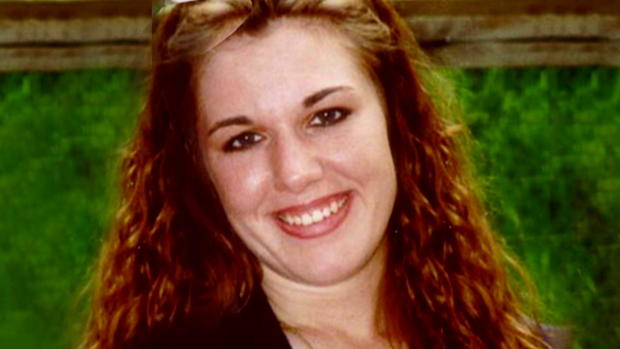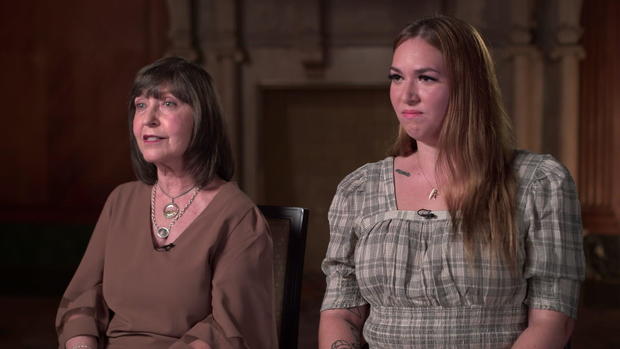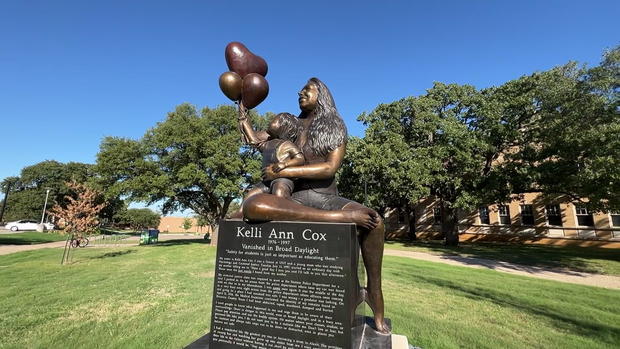Investigators use psychology to help extract confessions from a suspected serial killer
More than two decades after “48 Hours” correspondent Erin Moriarty began reporting on the case of a missing 12-year-old girl from Friendswood, Texas, there is finally a conclusion to the case. What no one knew when Laura Smither first went missing in 1997 was that she had been the victim of a serial killer. William Reece would go on to murder three young women that same year before he was eventually identified by DNA.
LAURA SMITHER AND KELLI COX
Erin Moriarty: There was a very scary killer who was going up and down I-45 on his way, Texas, Oklahoma and back –
Josh Rogers: That is correct.
Erin Moriarty: — killing young women.
Josh Rogers: That is correct.
Interstate 45 runs through the swamps and derelict oil fields between Galveston and Houston. The highway marks a trail of unsolved murders that stretches back for decades. And Friendswood, Texas, Deputy Chief of Police Josh Rogers says 1997 was a particularly deadly year.
Gay Smither: We were living in such a false sense of security. … it was quite a shock to the system when we got educated.
Erin Moriarty: And you got educated the hard way?
Gay Smither: The worst way. Absolutely the worst way.
Gay Smither
On April 3, 1997, Gay Smither’s 12-year-old daughter Laura — an aspiring ballerina — went out for a run and never returned. As days passed, thousands of volunteers on foot and on horseback combed the swamps and fields around their home in Friendswood. The U.S. Marines even flew in to help.
CBS News
I was also there in 1997 with the family — Gay, Bob and Laura’s younger brother, David.
Erin Moriarty (1997): Are you surprised by the outpouring of concern and sympathy?
Bob Smither: Oh, we’re uplifted by it. It’s the only thing getting us from one day to the next.
Erin Moriarty (looking at photos with the family in 1997): The beginning of the ballerina.
Bob Smither (1997): Exactly. Yeah, this was taken in the backyard of the house…
Gay Smither (1997): There is no doubt she’s coming home.
Gay Smither: I went into denial immediately. I — I would not accept any other scenario other than somebody had taken her and that if I prayed hard enough, she’d be released to come home to us. That’s how I coped.
Then came the devastating news 17 days later, when Laura’s decomposing body was found in a retention pond 12 miles from her home, by a father and son walking their dogs.
Father (1997): We thought it was a dead animal in the water or something like that… but my son Jason … says “no, animals don’t have socks.”
Gay Smither: I screamed into the phone. … That’s not Laura! That’s not Laura! That’s — I couldn’t accept it … And that was — I can still hear my screams in my nightmares.
Gay Smither: And then, of course, we had to tell David. And for some things, there are no words.
Erin Moriarty: How old was David at the time?
Gay Smither: Nine. … He not only lost his sister; in a way, he lost his parents … we were physically there, but we were emotionally absent … Part of us was gone. Part of us was ripped out.
After weeks in the water, Laura’s exact cause of death could not be determined. Investigators also couldn’t be sure if she had been sexual assaulted. In spite of the unknowns, a suspect emerged pretty quickly — a man named William Reece.
Gay Smither: It was the third day that Laura was missing that he was on the police radar.
Erin Moriarty: That quickly?
Gay Smither: Yes, the third day.
Erin Moriarty: And why?
Gay Smither: Because he was a sex offender.
14th Court of Appeals
Reece been released six months before Laura’s murder after spending 10 years in prison for two rapes in his native Oklahoma. He was now working in Friendswood.
Josh Rogers: He was … building a residential subdivision and was a bulldozer operator.
And on the day Laura went missing, because of rain, police learned, Reece was let off work at 9 a.m.
Josh Rogers: Which would have taken him right in the direct path of Laura Smither.
Investigators searched Reece’s truck and found fibers from replacement floor mats matched trace fibers on Laura’s socks.
Josh Rogers: These weren’t factory … floor mats. … These weren’t common fibers.
While police continued to investigate Laura’s case, Reece remained free and was traveling back and forth between Houston, where he worked, and Anadarko, Oklahoma, where his mother lived. Then in July 1997 in Denton, Texas — a university town along the stretch of interstate connecting them — 20-year-old Kelli Cox disappeared.
Jan Bynum: I used to describe it, it’s like Martians picked her up. She just vanished.
Kelli’s mother Jan Bynum says Kelli had gotten locked out of her car after a class trip to the Denton police station. She had gone to a nearby gas station parking lot to use a pay phone.
Jan Bynum: Very busy area, with police officers everywhere.
Jan Bynum
Jan knew something was wrong when Kelli failed to pick up her then-toddler, Alexis, from daycare that afternoon.
Jan Bynum: She would never have left her daughter. … she was only 19 when Alexis was born. But she took such responsibility … And she embraced being a mom. Oh my gosh, she embraced it. … And I know she absolutely adored this one over here (looks at Alexis).
In addition to raising Alexis, now 27 years old, Kelli was taking a full load of courses at UNT, the University of North Texas, in Denton.
Jan Bynum: She was maintaining straight A’s in college.
Alexis Bynum: All A’s on her finals a week after having me.
Jan Bynum: Yeah, a week after she had Alexis, she took her final exams and pulled all A’s on — I mean, she was very, very driven.
Alexis says she remembers little about her mother, except the anguish of her being gone.
Alexis Bynum: I remember looking for her.
Erin Moriarty: You do? Even though you were that little?
Alexis Bynum: I remember lookin’ all around the house.
Jan Bynum: She would look in closets … She would look under the bed and say, “Mommy, mommy.”
The days of searching turned into weeks, and then months. Jan was on local TV pleading for help finding her daughter.
JAN BYNUM (1997 news report): I don’t want it on the back burner. I want her face out there.
But unlike Laura Smither, Kelli was a young woman, not a child. And as the case dragged on, Jan says she didn’t feel that finding Kelli remained a priority for police. Jan still remembers a conversation she had with one member of the department three months after Kelli went missing.
KTVT
Jan Bynum: And he said, “You should just consider yourself lucky we’re even working on this case. Most police departments would have just turned her picture into the Missing Persons Clearinghouse and been done with it.” … that was heartbreaking.
Jan was certain that someone had abducted Kelli but was at a loss. Police had no body and no strong leads, and the case soon grew cold.
Jan Bynum: I don’t think … I ever completely not think when the phone would ring, that maybe it was something about Kelli.
Just 11 days after Kelli went missing, up in Oklahoma, and not far from William Reece’s hometown, another young woman was about to vanish.
TIFFANY JOHNSTON AND JESSICA CAIN
Kathy Dobry (looking at photos): She’ll always be my baby. … She’ll always be a granddaughter … and she’ll be a wife.
Kathy Dobry
Kathy Dobry’s daughter Tiffany Johnston, 19 years old and newly married, was just starting to build her life. On July 26, 1997, she vanished from a Bethany, Oklahoma car wash, leaving her car behind.
Kathy Dobry: Her car mats were hanging on the car wash rack … her money, her paycheck, everything was in the car.
The next day, Tiffany’s partially clothed body was found in tall grass just off the interstate, 15 miles west of that car wash. She had been strangled and sexually assaulted.
Oklahoma County District Attorney’s Office
Kathy Dobry: She had rope burns around her wrist and … she had black and blue places on her face.
No one at the car wash reported seeing anything out of the ordinary.
Erin Moriarty: So, whoever took her had to be pretty calculating and thinking about the surroundings.
Kathy Dobry: Oh, yes. And Tiffany would fight.
A few days after Tiffany’s murder, Kathy says she got a phone call from a man she knew from her town of Anadarko: William Reece.
Kathy Dobry: He called to tell me he was sorry. … that he had heard Tiffany had gotten killed.
Erin Moriarty: And how did he sound when he called you?
Kathy Dobry: Sincere. … All he said was, “I’m sorry to hear about your daughter.”
Erin Moriarty: How did you first meet William Reece?
Kathy Dobry: I met him at the restaurant.
Kathy was a waitress in town and knew Reece’s mother. And when Reece was released from prison in 1996 and came home, Kathy had given him a ride to get a new driver’s license.
Erin Moriarty: Did you know what he had spent time in prison for?
Kathy Dobry: No. They acted like it was no big deal.
Erin Moriarty: And would you have even guessed that he had been convicted of violent crimes toward women?
Kathy Dobry: Oh, heavens no.
It never occurred to Kathy that Reece could have had anything to do with Tiffany’s murder.
Kathy Dobry: I couldn’t see someone that I knew, that would kill Tiffany, because they knew how much she meant to me.
As for investigators, they found the killer’s DNA on Tiffany’s body, but they weren’t able to develop a profile.
Erin Moriarty: At some point, Kathy, did you give up thinking they’re just never going to find the person who killed my daughter?
CBS News
Kathy Dobry: No. I never gave up because I made a promise to Tiffany when I buried her that I would not give up until we found who did it.
Erin Moriarty: Why was it so important to find who killed her?
Kathy Dobry: Because I didn’t want him killing someone else’s child.
Just three weeks after Tiffany’s murder, back in Le Marque, Texas, it happened again.
SUZY CAIN (1997 news report) If you have my daughter, I pray that you would return her. We want her back home. … We’re not gonna let her go.
Jessica Cain was about to graduate high school.
NEWS REPORT (1997): The 17-year-old was last seen leaving a Clear Lake-area restaurant.
On August 17, 1997, when she did not get home by her curfew, Jessica’s father, C.H. Cain, went out looking for her.
C.H. Cain (1997): I had been to all the places where I thought she might be. … And I was on my way home and it’s actually just three or four miles from the house, on the side of the road.
He spotted her truck on the shoulder of I-45. But Jessica was gone.
C.H. Cain (1997): And there was no sign of a struggle.
Once again, search parties combed the area for yet another missing girl.
NEWS REPORT (1997): More than a hundred volunteers searched on foot, along the marshes and through the brush … tracking dogs were called in to help …
Gay Smither: We were the most broken people at that point.
Gay and Bob Smither—still reeling from the loss of their daughter Laura just four months earlier—felt compelled to join the search.
Gay Smither: We didn’t hesitate. We went immediately.
NEWS REPORT (1997): The search for Jessica Cain widened today, across the salt grass and scrub that surrounds the marshes in this area …
The search for went on for weeks, but there was no sign of Jessica and no clue who had taken her.
Gay Smither: We wondered could it be the same person who took Laura from us. You know, we just didn’t know.
As Gay wondered about William Reece and his involvement, a story emerged about another case — where the victim survived.
Sandra Sapaugh (1997): Everything happened so fast …
Back in May 1997—three months before Jessica Cain disappeared—19-year-old mother Sandra Sapaugh stopped at a convenience store off of I-45 in Webster, Texas, where she noticed a man staring at her from the parking lot.
Sandra Sapaugh (1997): And his truck was out there parked … but I didn’t pay much attention.
When Sandra left and went to a Waffle House across the street, she saw the man again.
Sandra Sapaugh (1997): He asked me if I needed help. … And I go, “help for what?” And he goes, “well, your tire’s flat.”
KHOU
But just moments later, the stranger was forcing her into his white pickup truck at knifepoint.
Sandra Sapaugh (1997): He would just tell me to keep my mouth shut … I mean, I was terrified.
She says he sexually assaulted her in the truck and then they started speeding down the interstate.
Sandra Sapaugh (1997): The only thing I was thinking, was, “he’s gonna kill me.” … I’d rather jump and kill myself than him doing that to me.
And that’s just what Sandra did. As the truck sped down I-45, she opened the door, jumped out and hit the pavement.
Sandra Sapaugh (1997): And then I got up. … started running.
Gravely injured, Sandra managed to get help and reported the incident. Five months later—in October 1997 — during a meeting with Friendswood police, Webster investigators noticed that Sandra’s description of her abductor’s pickup sounded similar to the truck Friendswood police had searched in Laura Smither’s case, belonging to William Reece.
Harris County District Clerk’s Office
On October 16, 1997, Reece was pulled in for a lineup.
Sandra Sapaugh (1997): When he walked out, I mean I knew it was him. … No doubt. It was him.
William Reece was immediately arrested and charged with kidnapping. He pleaded not guilty. He was finally behind bars, but not charged in any of the murdered girls.
SUSPICIONS SWIRL AROUND WILLIAM REECE
William Reece was defiant. He denied kidnapping Sandra Sapaugh and slashing her tire, but after his arrest, investigators were determined to tie him to Laura Smither’s murder, too.
REPORTER: You think you’re being unfairly treated Mr. Reece?
WILLIAM REECE: Yeah, I do. I didn’t do nothing.
Friendswood Deputy Chief Rogers says they thought they had found another link when they searched Reece’s apartment.
Josh Rogers: He … had a horse blanket that was multicolored. Most of those colors were also found … on one of Laura Smither’s socks. … So, the evidence was strong.
CBS News
And they already had those other fibers on Laura’s socks that matched Reece’s floor mats. Still, the DA at the time did not feel that was enough evidence to charge Reece with Laura’s murder.
Erin Moriarty: And was that frustrating?
Gay Smither: Very. Very … I got very, very angry. I felt that the system had failed us and failed Laura.
But Friendswood detectives weren’t giving up. They pulled records to trace Reece’s movements during the previous summer and discovered that Reece might be connected to the other unsolved cases. There was a fuel charge from Denton on July 15 — the same place and date of Kelli Cox’s disappearance. It was the first time Kelli’s mother, Jan Bynum, had heard the name William Reece. He was now also on the radar of Denton police.
Jan Bynum: That, you know, caused them to want to check Kelli’s fingerprints against anything in his truck.
Erin Moriarty: Did they find anything — fingerprints, anything connected to Kelli?
Jan Bynum: No, they did not.
Friendswood detectives also found records showing Reece had used a pay phone in the town where Tiffany Johnston’s body was found — less than an hour after she disappeared. And the owner of the car wash, after seeing his picture says Reece was a frequent customer. With that, Reece joined a list of possible suspects.
Josh Rogers: Anyone … along that route, during that time period … He was looked at.
KHOU
Investigators were also now eyeing him in Jessica Cain’s disappearance and used bulldozers to look for evidence at the horse ranch where he had worked but came up empty-handed. And in April 1998, as suspicion swirled around William Reece in several jurisdictions, he went on trial for the kidnapping of Sandra Sapaugh.
Erin Moriarty: You went to the trial, why?
Gay Smither: I did … I had to be there for Laura. I had to be there for Laura.
Gay Smither: I got very angry with what I learned at that trial. … ‘Cause, of course, it puts everything in your head, what he had done to Laura.
Gay Smither says she was especially upset when she heard the testimony of Reece’s two rape victims from the 1980s. Remember, he had been released from prison for those attacks just six months before Laura was murdered.
Gay Smither: They came down and testified and I was mortified to hear what he had done to those two young women.
The jury didn’t take long.
Gay Smither: They went out and … minutes later, was a guilty verdict.
William Reece was convicted and sentenced to 60 years for kidnapping Sandra Sapaugh.
Josh Rogers: I think a lot of people felt like, you know, that was probably going to be the best that we were going to be able to do, is just to keep William Reece off the streets again.
But Laura Smither’s case remained officially unsolved… and the Smithers wanted Reece charged. Up in Oklahoma, Kathy Dobry continued to pressure investigators to solve Tiffany’s murder.
Kathy Dobry: At first, I’d call every week. … and it was always the same thing. They didn’t have anything.
It would take more than a decade before Kathy says her calls were finally answered.
Lynn Williams: All I knew was that I’ve got a victim whose car was at the car wash.
In 2012, retired police chief Lynn Williams had recently started working on cold cases at the Oklahoma State Bureau of Investigations—or OSBI—and was assigned to Tiffany’s case.
Ryan Stephenson
Lynn Williams: The car was abandoned. The keys were in the ignition. … the doors were unlocked. … No witnesses.
There was that DNA evidence from Tiffany’s body.
Erin Moriarty: So really … DNA was going to be your only hope.
Lynn Williams: That was … my frame of mind.
But the DNA had already been tested twice without success.
Wendy Duke: We were worried usually that there’s nothing left to test.
Wendy Duke is the supervising criminologist at the OSBI cold case unit. She found two samples from Tiffany’s body that had not been totally consumed in earlier testing and was able to develop a partial male profile from them.
Wendy Duke: It’s exciting, even if it is a partial profile.
Because it was a partial profile, Duke could only compare it to a profile from a known person, and the team slowly eliminated suspects from the file until they got to William Reece.
Erin Moriarty: And what was the result?
Wendy Duke: And … he could not be eliminated from that partial profile on the swab from Tiffany.
Kathy Dobry
The DA in Oklahoma thought it was enough to charge Reece for Tiffany Johnston’s murder. And after all those years of waiting, Kathy finally had some news.
Kathy Dobry: And I said, “Oh, my God. Why Tiffany?” That was my main thing. Why Tiffany?
Oklahoma law enforcement also shared the news with Texas investigators — including the Texas Rangers, who wondered if William Reece might be willing to talk to them about their cases.
They went to visit Reece in prison, and, to their surprise, he agreed to talk further if they could take the death penalty off the table. The Smithers agreed, and so did Jan Bynum— as long as Reece helped police find Kelli.
Erin Moriarty: That’s a huge decision to make before you even know —
Jan Bynum: I know. … basically … I wanted answers. And I wanted to know what — whether my daughter was alive or dead.
WILLIAM REECE’S CONFESSIONS
Jan Bynum: When they would find a body anywhere and then they would confirm who it was, and it wasn’t Kelli. … And I’d go, “Oh, it’s not Kelli.” And then I go, “But it was somebody’s daughter.”
Almost 19 years after Kelli Cox’s disappearance, her mother Jan was finally close to knowing what had happened. In February 2016, William Reece was moved from prison to the Friendswood jail after agreeing to give investigators information about their three Texas cases. He hoped his cooperation might help him in Oklahoma, too.
Josh Rogers: He told us that he wasn’t going to play games if we weren’t going to play games.
KTVT
Investigators took Reece out to a remote field south of Friendswood where he said Kelli Cox’s remains were located. Reece hadn’t yet told them if he was responsible for her death.
Erin Moriarty: He doesn’t give any confession.
Josh Rogers: No.
Erin Moriarty: But it’s clear that he’s got some involvement.
Josh Rogers: Correct.
Police spent long days and nights with Reece in the jail and out in the field looking for Kelli’s remains, and, during that time, Reece started telling investigators about his encounter with Kelli Cox in Denton.
He claimed they got into a fight in the gas station parking lot after he bumped into her, and she spilled her soda on him.
Oklahoma County District Attorney’s Office
WILLIAM REECE: I started cussing her, I think I pushed her. That’s when she hit me with the Coke.
WILLIAM REECE: And then I slapped her. And then it was over.
RANGER JAMES HOLLAND: She was fighting back.
WILLIAM REECE: Yes.
RANGER JAMES HOLLAND: OK. And what happens next?
WILLIAM REECE: And then I grab her around the throat, and I choke her.
Jan Bynum
Reece had just confessed to murdering Kelli Cox, but investigators weren’t sure if his story was true. They hadn’t found any sign of Kelli in that field. But as they kept looking, this was not the only major revelation to emerge.
WILLIAM REECE: I remember going to work … at a construction job site. It was a rainy morning.
Soon Reece was telling investigators what he said happened to Laura Smither on that rainy morning in Friendswood.
WILLIAM REECE: I hear something slam against my mirror … And it scared me, so I stopped. … I got out … and then — that’s when I looked in the ditch and I seen Laura Smithers laying in the ditch. … and she wasn’t breathing.
Reece claimed that Laura had died instantly after he’d hit her with his truck by accident. But he later changed that story, claiming Laura had survived, but when he tried to stop her from crying, he accidentally broke her neck.
Mary Ellen O’Toole: Psychopaths are incredibly callous individuals. … They are without guilt. And they are without remorse.
Mary Ellen O’Toole is a retired FBI profiler. “48 Hours” asked her to review the case records and Reece’s videotaped statements to try to understand his psychology.
Mary Ellen O’Toole: I’ve not assessed him, not met him … but looking at his cases, looking at his behavior … I would say in my opinion that he manifests traits of psychopathy.
WILLIAM REECE (police interview): Ya’ll wanted the truth so I’m telling you the truth.
And once police got him talking, Reece didn’t seem to want to stop. O’Toole says that Reece was probably enjoying the attention and the break from his routine.
WILLIAM REECE (police interview): I’m doing this of my own free will.
Mary Ellen O’Toole: What’s the worst thing that you can do to someone that has a tendency to love exciting, challenging, stimulating things? You put him in an environment like prison where they got bored. … These detectives recognized that. So, when you offer them the opportunity to come out … and assist law enforcement, they’re gonna jump at that.
After a week of fruitlessly searching for Kelli Cox, Reece offered to help them find another victim —Jessica Cain — whom he said he had buried in a different field closer to Friendswood. And while Reece didn’t have an agreement with the DA in that case, he started telling that story, too — claiming he had an argument with Jessica outside the restaurant where she was last seen and that she followed him down I-45 for 30 miles.
WILLIAM REECE: I don’t know why, I just pulled over. She pulled up behind me and started yelling. … I went off on her again.
RANGER JAMES HOLLAND: Okay. And then you end up choking her out then?
WILLIAM REECE: Yes, sir.
RANGER JAMES HOLLAND: On I-45?
WILLIAM REECE: On I-45.
But even as Reece admitted murdering Jessica, he did not admit to raping her or Kelli or Laura.
Erin Moriarty: Do you believe that most likely every one of his victims was raped?
Mary Ellen O’Toole: I do. I believe that they were. Because I believe that that was really the intent of the crime.
Erin Moriarty: If that’s his motivation, sexual motivation, why doesn’t he admit that? Is that typical?
Mary Ellen O’Toole: In some cases, I would say that’s typical. Because in their eyes, that makes them look pretty pathetic … that you have to attack someone, strangle someone, beat someone up in order to be sexually gratified.
RANGER JAMES HOLLAND: Go ahead with the next one, Bill.
WILLIAM REECE: That’s the one in Oklahoma City.
RANGER JAMES HOLLAND: OK.
Finally, even though he could again be facing the death penalty, investigators were able to get Reece to talk about the last case they thought he was linked to from 1997: Tiffany Johnston, whom Reece said he encountered at that car wash in Oklahoma.
WILLIAM REECE: I was spraying it, cleaning out from underneath my truck … that’s when that girl yelled, “Hey!” I sprayed her. I go, “Sorry.” I thought she said something, I said. I started cussing at her. And, uh, me and her got into it.
He knew police had his DNA and admitted having sexual contact with Tiffany, after forcing her in his horse trailer.
WILLIAM REECE: We was fighting, and I unsnapped her overalls. I don’t know why.
Once again, Reece made a point to blame his victim for the violence that followed.
WILLIAM REECE: She hit me in the back of the head with a horseshoe. … It pissed me off and I started squeezing around the throat.
Four victims and four confessions — but with no sign of Kelli Cox or Jessica Cain, not everyone believed Reece was telling the truth.
Josh Rogers: There was, you know, some folks thinking that maybe the information was not accurate and that he was playing us.
JUSTICE FOR THE VICTIMS’ FAMILIES
Josh Rogers: As we dug and we continued to not locate anything, there certainly wasn’t as many investigators helping at the end of it as they were at the beginning of it.
In March 2016, after 25 days of digging and with William Reece’s guidance, there was finally some news: they found Jessica Cain’s remains.
Erin Moriarty: What was that day like?
Josh Rogers: Very emotional … we were sad, but also, we were joyful as well to have located the remains.
Jessica’s parents asked for privacy as they processed the news and buried their daughter. For investigators, finding Jessica corroborated William Reece’s stories and reenergized the search for Kelli Cox. After another two weeks of painstaking work, they found her.
CBS News
Alexis Bynum: I had nightmares for the first time — where she had to wake me up, screaming. That never — never had nightmares like that before.
Jan Bynum: Yeah. I mean, her nightmares were being down in a hole.
Alexis Bynum: It was just — (emotional).
After Kelli and Jessica were found, Oklahoma County prosecutors Jimmy Harmon and Ryan Stephenson had William Reece transported back to their state to face a capital murder trial for Tiffany Johnston.
Jimmy Harmon: We typically only seek the death penalty on the worst of the worst murderers and Mr. Reece certainly fit that bill.
Reece pleaded not guilty — even though prosecutors had the DNA evidence and his chilling words from his taped confession.
WILLIAM REECE (to Ranger Holland): That’s when I grabbed her around the throat and her.
When the trial began in May 2021, Reece’s defense fought to keep that video out. But the judge decided the jury would watch it and all the statements where Reece admitted killing Laura Smither, Kelli Cox and Jessica Cain. All relevant, says Stephenson, for showing that Reece had a pattern.
Ryan Stephenson: All of that being in such a short time period … we wanted to be able to show the jury that this guy wasn’t stopping, he — he was stopped.
Sandra Sapaugh and two women who say Reece sexually assaulted them in 1997 all testified at the trial. Prosecutors say this testimony was crucial to correcting the self-serving stories Reece told on those tapes.
Ryan Stephenson: You … never quite get the full story out of William Reece. He always tells it in a way that makes him look best.
Prosecutors think the true story is Reece would set traps for his victims.
Jimmy Harmon: He would sometimes create the situation, in the case of Sandra Sapaugh, by slashing her tire … and … presented himself as the Good Samaritan. And … he would then attack them.
After nine days in that Oklahoma courtroom, the case went to the jury. It took them less than two hours to decide, finding William Reece guilty of murdering Tiffany Johnston. Reece was sentenced to death.
Kathy Dobry: I’ll never forgive him for killing Tiffany and … he should die.
But instead of being sent right to death row, Reece first made one final trip back down the interstate to Texas, where he agreed to plead guilty to murdering Laura Smither, Kelli Cox and Jessica Cain.
Erin Moriarty: It took almost 25 years, but you finally got justice for Laura, didn’t you?
Gay Smither: Yeah. And for Jessica and Kelli. And that was very important to Bob and I.
In exchange for his guilty pleas, Reece received three life sentences in the Texas cases. Gay Smither made a statement at one of those hearings.
Gay Smither: I spoke about Laura and how we had an empty seat at our table for the rest of our lives … And then I told him that I — I forgave him for what he did.
Erin Moriarty: You forgive him for ruining your lives? You –
Gay Smither: Yeah.
Erin Moriarty: — lost Laura who — who had her whole life ahead of her.
Gay Smither: Forgiveness does not mean I condone what he did, nor does it mean I will ever forget what he did. Forgiveness was for me … to not live in a — in a cage of rage. That’s what forgiveness is.
With Laura’s case now resolved, Gay and Bob could devote more time with their son David, now 34, and his children. Gay also travels the country training law enforcement on handling missing persons cases.
GAY SMITHER (speaking at a training class): I’m here to tell you what happened with the prayer that you will be inspired by Laura’s story to never give up.
CBS News
The Bynums wanted a way to share their memories of Kelli and created a statue in her honor on the UNT campus, where Kelli had once been a student. Hoping to remind people to be aware of their surroundings.
Jan Bynum: You’ve got to live. But you can do that in a smart way and be safe.
Jan says that like every family touched by William Reece, she is having to learn how live with grief.
Jan Bynum: I cry every day. … And I used to say to people, if you don’t want to see me cry, then you can walk away because I am going to cry.
Erin Moriarty: How do you want people to remember your mother?
Alexis Bynum: Just the way she was. … She was a ball of fun … She was a beautiful, young woman who had a lot going for her. She was driven. And she was doin’ it for me.
William Reece is still in a Texas prison.
Oklahoma authorities are in the process of trying to bring him back to face his sentence there.
Produced by Sarah Prior and Richard Fetzer. Shaheen Tokhi is the associate producer and Dylan Gordon is the associate producer, archives. Nancy Bautista is the broadcast associate. Ken Blum, Gary Winter and George Baluzy are the editors. Lourdes Aguiar is the senior producer. Nancy Kramer is the executive story editor. Judy Tygard is the executive producer.
For all the latest Automobiles News Click Here
For the latest news and updates, follow us on Google News.




